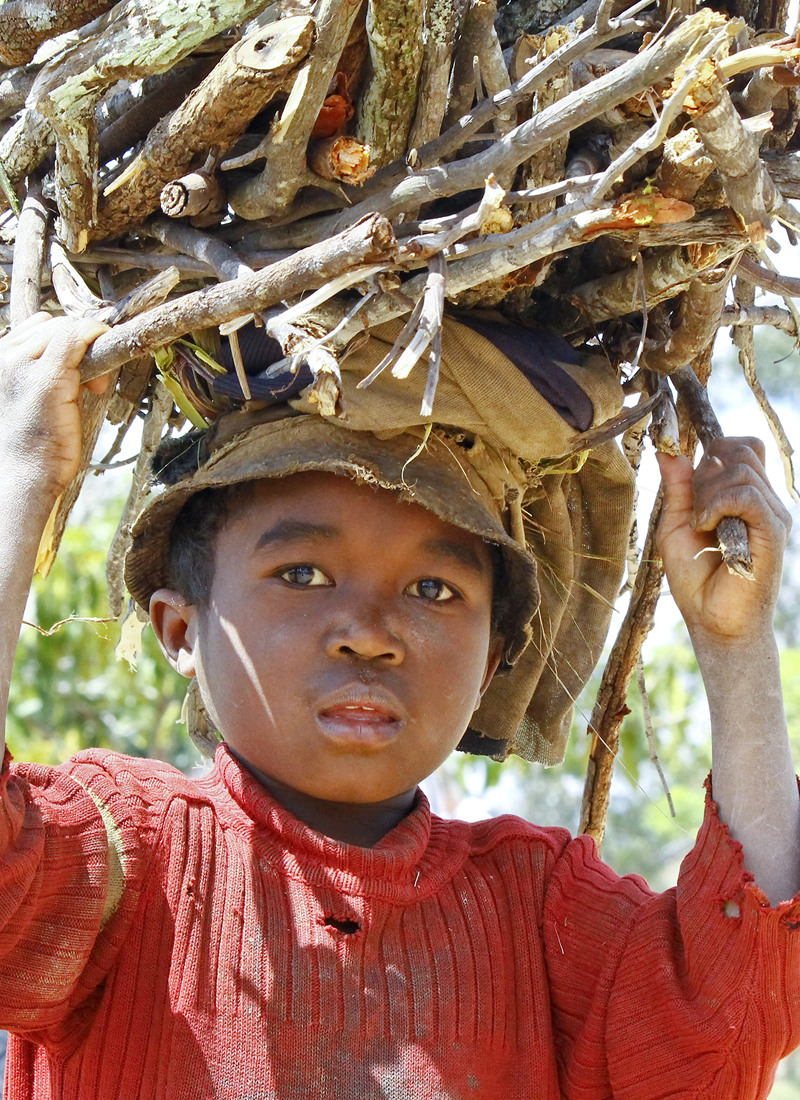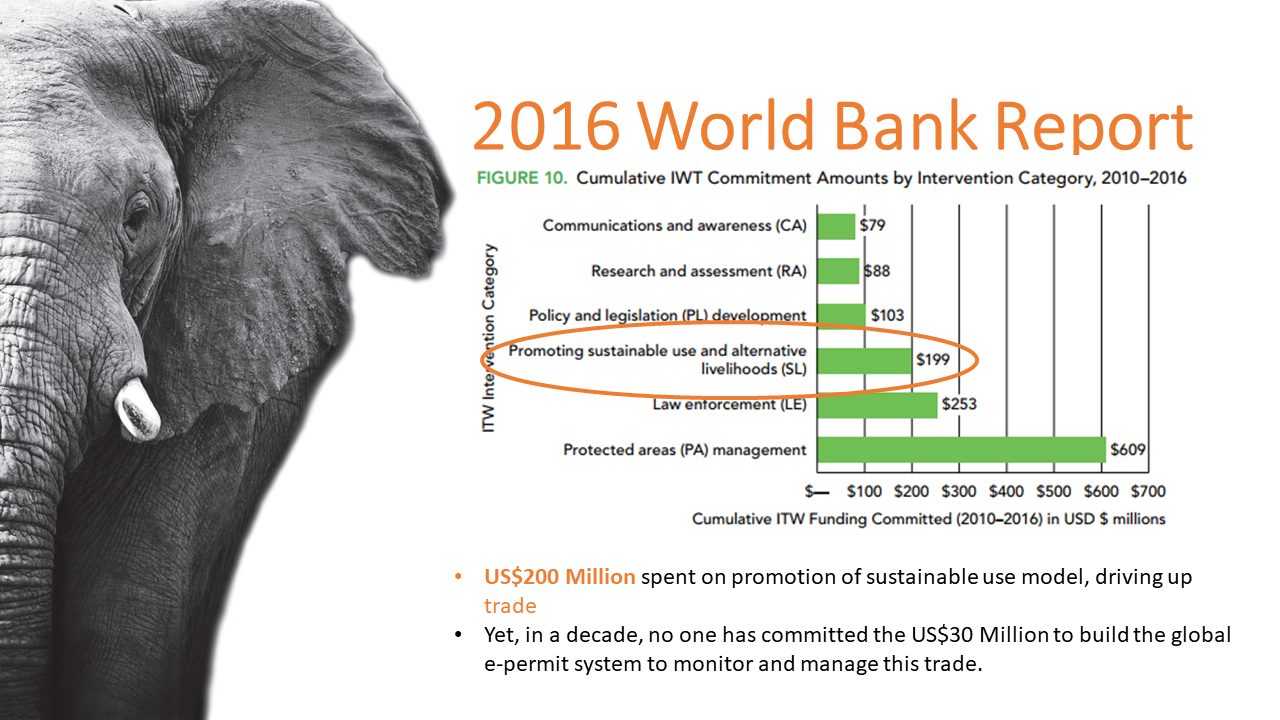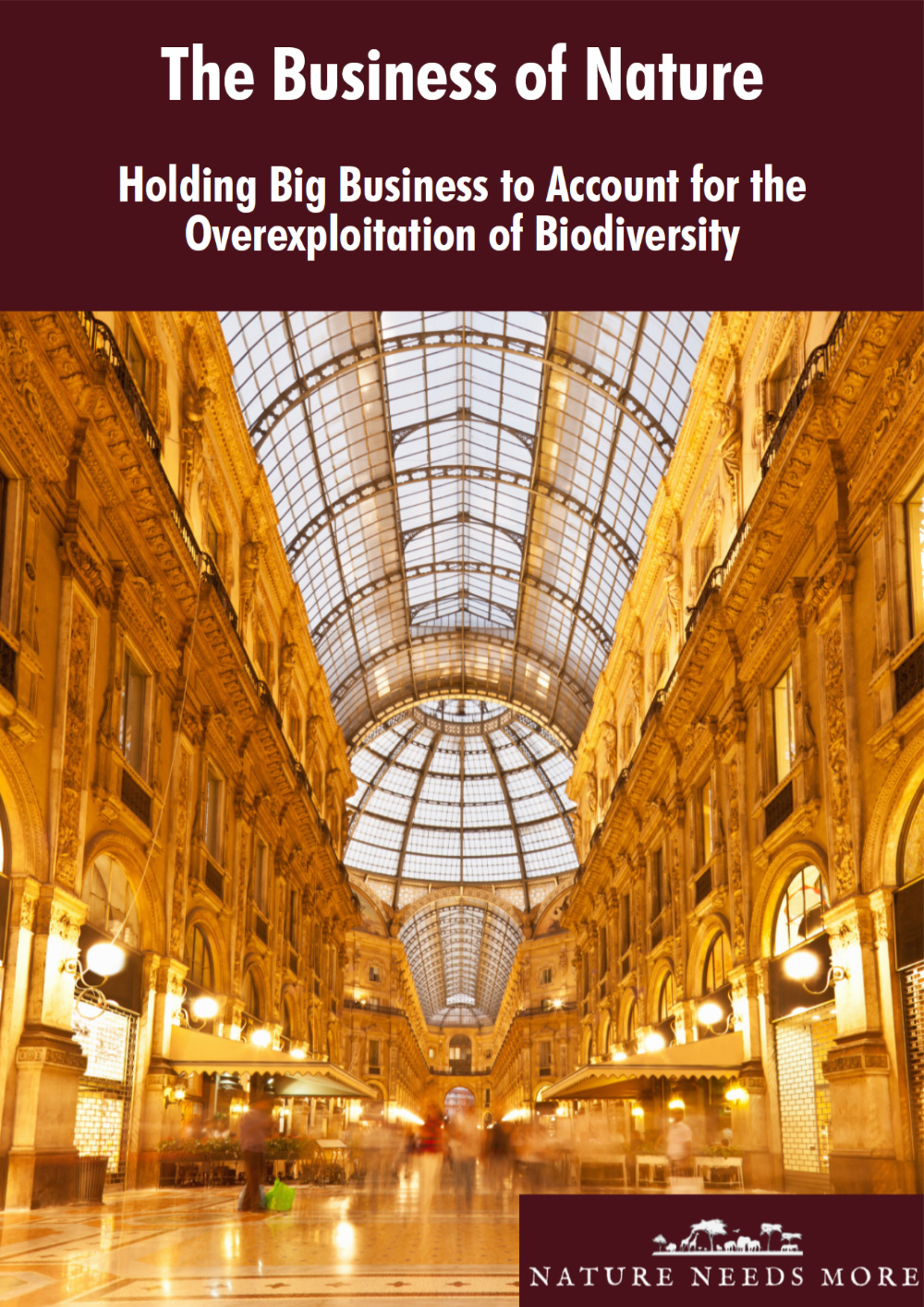Supply Side Of The Trade In Endangered Species
Trade has three elements – supply, demand and the mechanism of trade. In order to address the scale of biodiversity loss associated with the trade in wild species, due to overextraction, overproduction and overconsumption, all 3 elements need to be tackled.
The justification for allowing the trade at all is currently embedded in the notion of ‘sustainable use’ – the exploitation of nature for human needs and wants in a way, and at a rate, that does not lead to the long-term decline of species (and biodiversity). All the evidence shows decades of wildlife and ecosystem decline, as the sustainability industry (business, consultants, academics, NGOs, Media etc) grows.
The commodification of nature and its exploitation for profit is accepted as a necessity under capitalism and especially under the current form of financialised, free-market capitalism. The result is exactly as one would expect – ‘sustainable use’ is never actually sustainable; all exploitation of nature is done in ways and at a rate that leads to a long-term decline in species and biodiversity (a handful of endlessly recited counterexamples such as Australian crocodile farming notwithstanding).
The extraction is done by for-profit businesses, which have no obligation to ensure that their extraction is sustainable.

To the contrary, they are allowed to fully externalise the costs to nature of their extraction – think the damage they do to ecosystems, population decline of non-target species (bycatch), pollution and the dumping of waste into nature. How is this enabled?
- Large corporations and primary industries are able to hide corporate mode of exploitation behind community livelihoods, poverty alleviation and global development aid. When under threat from new regulations, the industry waxes lyrically about the small, family farmers, fishers and wildlife havesters struggling to survive and stages media friendly protests.
- For decades, corporations, primary industries and investors have evolved voluntary, phantom solutions to avoid mandatory regulation, and to further undermine the small amount of regulation that was in place. Greenwashing and phantom solutions take many forms, but what they all have in common is that they are orders of magnitude cheaper than taking real action to avoid biodiversity loss and carbon emissions. They are also not a threat to the current neoliberal free-market ideology and the rich individuals and corporations who are the main beneficiaries of this system.
- Believing in the sustainability of extraction is an act of faith, as conservation scientists are not actively publishing any proof of the model. Only recently has research into the sustainable use model been undertaken. To-date, such research into the validity of sustainable use has shown either negative effect of trade on species populations or that the model’s impact for conservation purposes is ‘inconclusive’.
The entire mode of extraction from nature under capitalism relies on two myths: 1. The myth of inexhaustibility, and 2. The myth of human superiority. If we truly believed that we live on a limited planet and are part of nature (and so fully dependent on its health), then we wouldn’t allow the vandalism of whole ecosystems and species to fulfil unchecked desire for profit and wealth and unnecessary luxury consumption.
The SUStainability Game
The mantra of ‘sustainable use’ is repeated constantly and goes unquestioned in the context of sustainable development, including with the international legal trade in wild species.
Even going to the UN Sustainable Development Goals, which have been broadly adopted as a guide for sustainability, in a “governance through goals” approach, the question if the ‘use’ is actually sustainable under real world conditions is never asked. A 2020 paper: The Sustainable Development Goals prioritize economic growth over sustainable resource use makes clear the problem with this approach in its title.
As the report confirms, little progress will be made to tackle overextraction and overproduction, because of the push for ever-growing free trade agreements. Too much focus is put on efficiency improvements, rather than absolute reductions in resource use, even though such gains cannot compensate for growing populations and economies
Maintaining business-as-usual should come no as surprise given the popularity of the UN SDGs mainly relies on the same institutions currently responsible for unsustainable resource use. Neoliberal ideology enables them to pretend they care about the environment and social justice, but let’s not get in the way of the ‘magic of the free market’ by actually setting hard targets and enforcing them.
Add to this corporate lobbying, business-friendly fiscal policies, tax avoidance and evasion which has led to the massive weakening of the public sector [read monitoring, regulation and prosecutions] and ensured wild species are seen as nothing more than merchandise. The current trajectory of overextraction of wild the wild species for the legal trade is assured, with major donors providing significant funds to initiatives focused on ‘sustainable use’. A 2016 World Bank Report, highlighted US$1.3 billion was provided by major donors over a 6-year period to combating the illegal wildlife trade. Of this 12% (US$200 million) was spent ‘promoting the sustainable use model’. At the same time, no funds were invested to improve the monitoring of supply chains for the legal trade. Until we deal with these blatant contradictions the decline in biodiversity will continue unabated, with catastrophic outcomes.
The dramatic decline in populations of endangered flora and fauna has been documented over the course of 50 years in the WWF Living Planet reports, issued every 2 years, and fully confirmed in the May 2019 IPBES Report, which specifically states that trade is the second biggest factor driving the extinction crises. Add the compete failure of global Convention on Biological Diversity (CBD) to achieve to achieve the Aichi Targets outlined it its ‘Strategic Plan for Biological Diversity 2011-2020’ and the global pandemic.
There is of course a need for extraction from nature to support the human population, but what is currently in place is in no way compatible with sustainable use. The puny limitations put on extraction by CITES and fishing agreements are easily bypassed due to the lack of monitoring and enforcement, which also allow a rampant illegal trade to flourish. Fishing vessels simply can switch off their transponder are then magically ‘permitted’ to fish in restricted waters. This is not a failure of technology, its is a failure of will based on the above-mentioned myths.
Instead, we are fed a plethora of phantom solutions to keep the charade of ‘sustainable use’ alive for a bit longer, allowing overextraction and over production to continue. Green finance, biodiversity credits, offsets, certification schemes, voluntary standards, sustainability reporting and many more are invented by PR hacks and think tanks on behalf of their corporate clients to keep us distracted from what is really happening. The corporate media are fully compliant and will print and screen whatever companies are willing to pay for.
It Is Time To Take The ‘SUS’ Out Of SUStainability
The effects of climate change where not as obvious to the general public in the 1980s. This meant the fossil fuel industry PR could “reposition global warming as theory, not a fact”, with “advertorials” – advertisements disguised as editorials – with broken record messaging of “weak” evidence, “non-existent” proof, inaccurate climate models.
Thankfully, conservation organisations and academia have been monitoring the decline of species for decades. This meant that industries who rely on overextraction of wild species to manufacturing their products couldn’t “reposition biodiversity loss as a theory, not a fact”, based on “weak evidence” and “nonexistent” proof. All the evidence and proof of species decline was readily available.
So, instead, for the last two decades or more businesses have focused on producing glossy sustainability reports, paying for sustainability advertorials and supported the rise of sustainability editors. While much has been written, little has provided any proof.
This means addressing the unsustainability of ‘sustainable use’ in the current ideological and economic framework requires real, not phantom, solutions. Interestingly, these solutions aren’t new, we simply have to remember that we previously had period where certain industries were subjected to mandated (and sometimes drastic) regulation, as the result of a crisis. These include:
- Putting hard limits on the commodification of nature. This could be achieved via changing CITES to the ‘reverse listing’ model of whitelisting species for trade and making ‘no trade’ the default position under the convention. Moving to a reverse listing model would significantly reduce the possibility of overextraction and overproduction. It also involves hard measures to stop unrestricted demand growth and the unnecessary driving up of desire to create the pseudo-luxury market involving wild species.
- Full transparency, in real-time, for all aspects of the trade. Because of the vast amounts of money involved in the trade in endangered species, the incentives to trade illegally or otherwise cheat and undermine the rules or to exploit loopholes will be massive. If ALL trade is fully transparent throughout the WHOLE supply chain, such incentives and schemes can be identified quickly. Paired with an automatic mechanism that requires all loopholes to be closed, sustainability and the rules can be enforced, and industry will adapt.
- Enforcing the ‘sustainable’ part of ‘sustainable use’ by using a clear, unambiguous definition and providing the appropriate monitoring and enforcement capacity across all trade in wild species. This again means going to whitelisting species for trade, with all the work on sustainability of any trade being done upfront and paid for by industry. In the absence of data, the precautionary principle will have to apply – no/poor data = no trade. It also means full cost recovery of the cost of regulation and enforcement through industry contributions.
- Reducing the desire to supply by taking away the ‘poverty alleviation’ argument of sustainable development. Conflating ‘sustainable use’ with poverty alleviation in the Global South has become the latest weapon in stopping mandatory regulation of the trade in wild species. This is despite the fact that it has been established by the IPBES that international trade in wild species is the dominant factor in unsustainable extraction, not local or community use.
Implementing such real and pragmatic solutions, would significantly undermine businesses unsustainable and unchecked desire to supply, so reducing overextraction and overproduction. The interconnectivity between opaque supply chains, the unsustainable desire to supply and the unsustainable demand must be acknowledged and understood. If this interconnectivity is ignored, demand reduction campaigns, for example, have servere limitations.
For example, the IUCN Policy Statement on Sustainable Use of Wild Living Resources, states, “Levels and fluctuations of demand for wild living resources are affected by a complex array of social, demographic, and economic factors, and are likely to increase in coming years. Thus attention to both demand and supply is necessary to promote sustainability of uses.”
An Alternative To Sustainable Use Must Be Provided – A Basic Income Linked to Conservation
As the natural world is reaching the point of no return, but companies want to keep profiting from the little that is left, have they simply adopted a strategy of (perceived) inclusivity to cover neoliberal greed, by creating the illusion that extraction is supported by indigenous people? Could this be the reason that indigenous groups are now, finally, being invited to the decision-making table?
It is understandable that there is significant scepticism in indigenous communities and it is necessary that first nations people question the underlying reason for this relatively recent change of heart in the conservation sector.
In the months before the CBD CoP16 it was noted that, “Indigenous peoples are mentioned 18 times [which is hardly gushing] in this decade’s targets to halt and reverse biodiversity, something that was celebrated as a historic victory. It followed decades of exclusion and bad treatment by the conservation sector”.
When indigenous groups offer their support for extraction of species, are they offering their support for small scale community, cultural use or large scale global industrial scale extraction? The point is we don’t know because these are lumped together in the discussions, corporate overexploitation has been enabled to hides behind the skirts of community livelihoods.
Even with their newly found influence, real or not, first nations people and community groups aren’t being provided an alternative to the extraction of their natural resources. Funding from high-income countries, sometime under the guise of aid, comes with the condition that their natural, and often unique, resources must be a part of the deal. The unproven sustainable use model is based on the ideology that “There is no alternative” (TINA), the market economy is the only system that works.

In 2017, the Global Land Outlook highlighted that a third of the planet’s land is severely degraded and billions of tonnes of fertile soil are being lost annually as a result of destructively intensive agriculture. In 2019, the IPBES (Intergovernmental Science-Policy Platform on Biodiversity and Ecosystem Services) Report concluded that biodiversity is declining globally at rates unprecedented in human history. The report also confirms the trade (aka, sustainable use) of flora and fauna as the second biggest threat to species survival after land use. The Planetary Boundaries model has long made it clear that loss of biosphere integrity (biodiversity loss and extinction) means we are now, collectively, beyond the high-risk point with all the uncertainty this brings.
All this points to a desperate need to an alternative to the sustainable use model. We can’t overextract and overproduce our way out of this crisis. And, there is an alternative to the sustainable use model, a Basic Income Linked To Conservation.



In recent years, many organisations and papers have quoted the statistic that, today indigenous people make up just 6% of the world’s population but they protect 80% of the planet’s remaining biodiversity. While the basis for the figure of 80% has been questioned, it is safe to say that a significant amount of remaining, high-value biodiversity is found on land under indigenous stewardship. If we acknowledge this, then paying a basic income to those indigenous people who live on or close to such high-value areas, to alleviate the need for alternative land uses that would degrade biodiversity would be the best strategy to protect them. This would, for example, negate the need to allow access for logging, ranching or mining operations on indigenous land, as a secure income stream for the population would already be in place.
With a back-of-the-envelope calculation, we can estimate the amount of money needed.
Step 1: The global population has just reached 8.2 billion. So, these 6% of indigenous people amounts to 492 million.
Step 2: Let’s assume that half of the 6% indigenous population of the world would need to receive such a basic income, as not everyone will live on or near these high-value areas of biodiversity. Let’s round up to 250 million
Step 3: If the world paid each of these people (adults and children) US$2,500 pa in basic income to protect the remaining, high-value biodiversity that is found on land under indigenous stewardship, this would amount to US$625 billion annually. That sounds like a lot of money, but lets recall that global trade in 2024 was worth US$33 trillion.
Step 4: A 2% levy on world trade would easily cover such a global basic income scheme.
Given that the US government has just applied a ‘baseline’ tariff of 10% for all US imports, such a levy is no longer a taboo subject and WTO rules on ‘free trade’ are clearly no longer in force.
A Basic Income Linked to Conservation model can also be used wherever rehabilitation of degraded land is required and also when the sustainable use model cannot be decisively proven to be a valid approach to saving endangered species. So, there IS an alternative.


